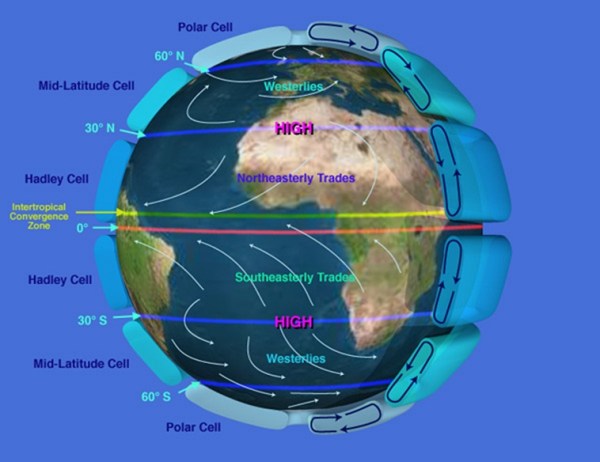Unseasonal and sudden heavy rainfall, accompanied by thunderstorms, hailstorms and lightning strikes, have so far claimed 27 lives in Gujarat on November 26.
While the weatherman says enough warning was given about lightning strikes, the disaster management system is designed more for earthquakes and heavy rainfall, not as much for lightning strikes – which annually contribute to a number of deaths across India.

What explains the unseasonal rainfall in November?
The India Meteorological Department (IMD) has attributed the lightning flashes to three weather systems – cyclonic circulation over the Northeast Arabian Sea and adjoining Saurashtra and Kutch, Western Disturbances, and Easterly trough. Western disturbances are storms that originate over the Mediterranean Sea region and may bring rainfall to northwestern India in the winter. Whereas, easterly winds flow from the east in the equatorial region throughout the year.
Regional director IMD Manorama Mohanty told The Indian Express, “Sunday’s weather phenomenon was due to the three systems of Western Disturbance over Pakistan, induced cyclonic circulation over Pakistan and Rajasthan and upper air trough in easterlies from Southwest Arabian Sea to Northeast Arabian Sea.” She added that the development of three simultaneous systems is not uncommon and has been reported during monsoons, too.
Atul Kumar Varma, group director of Atmospheric and Oceanic Sciences and Applications Group, at ISRO’s Space Applications Centre (SAC) in Ahmedabad, said, “In this season we have western disturbances passing over the northern part every year generally, descending towards the lower latitudes. As a result of this, we feel the effect of Western disturbances over the country.”
“This usually brings snowfall over the Himalayan region. But sometimes when the strength (of these disturbances) is more, it may bring rainfall in southern latitude areas, say Gujarat or Madhya Pradesh. This time, it was a passing Western disturbance, moving from west to east, forming somewhere near the Mediterranean Sea. The disturbance has passed over the Gujarat region and is now over Madhya Pradesh. Satellite data from today shows more rainfall occurring over Madhya Pradesh,” he added.
Why the lightning?
According to Mohanty, there are two reasons for lightning strikes. She said, “Whenever there is an interaction between any system and Western Disturbance it always leads to lightning. Also, the first spell of activity after a long dry period leads to convective activity that results in lightning.” This was also the case on Sunday.
Story continues below this ad
Varma said that the thunderstorm can also be explained by the presence of more moisture interacting with the Western disturbance this time: “When there is a low-pressure area, it attracts the air from the surroundings. With sufficient moisture presence, rain activity can enhance over that area, resulting in thunderstorm activity from these Western disturbances.”
“This time, the equatorial region, particularly the Intertropical Convergence Zone (ITCZ, located slightly north of the Equator) is also very active, as satellite data shows, which may have possibly provided sufficient moisture to the area and fed into the system, resulting in the thunderstorm activity,” he said.
But the strength of ITCZ activity helping intensify the rains is a possibility that will have to be confirmed with further data, according to Varma.
 Depiction of global atmospheric circulation, showing major convection cells at various latitudes, including Hadley, mid-latitude and polar cells, and showing the resulting surface winds. (Wikimedia Commons /NASA)
Depiction of global atmospheric circulation, showing major convection cells at various latitudes, including Hadley, mid-latitude and polar cells, and showing the resulting surface winds. (Wikimedia Commons /NASA)
Were warnings issued prior to lightning strikes?
Story continues below this ad
The Gujarat State Disaster Management Authority (GSDMA) was set up immediately after the 2001 earthquake and registered as a ‘Society’. It was initially mandated to implement the rehabilitation and reconstruction programme in the earthquake-affected areas. Also, it was to act as a nodal agency to plan and implement pre-disaster preparedness and mitigation activities.
But it does not have such a plan to warn people against lightning. GSDMA CEO Anupam Anand told The Indian Express, “There are already different pre-warning mechanisms in each district against heavy rainfall and earthquakes, and mechanisms to disseminate that too. Such a mechanism for lightning is not in place.”
The IMD, however, disagrees. Regional director Mohanty says that a specific warning for lightning was issued well in advance. “There was a day-wise and region-wise warning, especially for lightning and thunderstorms, issued by the IMD in advance but people generally do not pay heed to it.”
One of the objectives of GSDMA, as part of long-term disaster preparedness, is to prepare programmes and plans to mitigate losses on account of disasters as a strategy. The authority is working on an early warning system for cyclones.
Story continues below this ad
A communication system is being developed under a World Bank project for coastal areas, while cities like Surat are also developing their own separate systems against calamities like flash floods.



 Depiction of global atmospheric circulation, showing major convection cells at various latitudes, including Hadley, mid-latitude and polar cells, and showing the resulting surface winds. (Wikimedia Commons /NASA)
Depiction of global atmospheric circulation, showing major convection cells at various latitudes, including Hadley, mid-latitude and polar cells, and showing the resulting surface winds. (Wikimedia Commons /NASA)




































